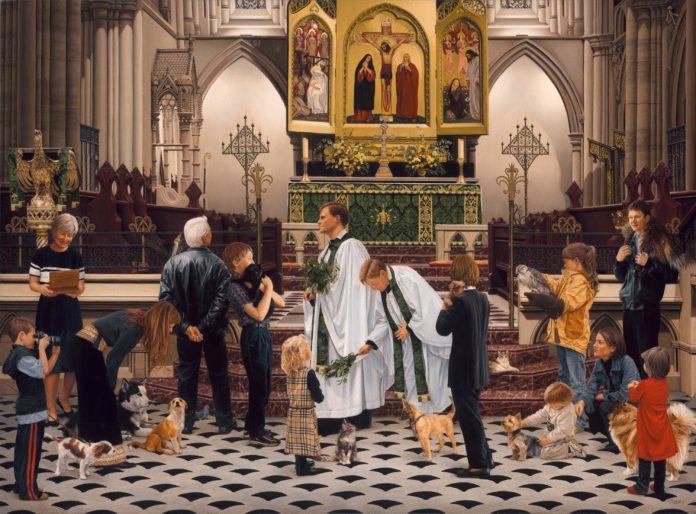Ann James Massey takes us through the process of creating a figurative art painting that celebrates an annual Catholic tradition.
The Blessing of the Animals: A Figurative Art Step-by-Step
by Ann James Massey
It has always been in my mind to pay homage to the presence of animals and spiritual support in my life (not to forget family and friends), as well as to the techniques, composition and extraordinary art left to us by the artists of the past. The seeds were planted in the late nineties for the perfect integration of these major influences when I heard of the Blessing of the Animals service in my spiritual home in Paris, The American Cathedral.
About the Blessing of the Animals Event
This yearly service is held in innumerable churches on or near October 4th to celebrate the feast day of St. Francis of Assisi. As legend has it, this remarkable saint also preached to the birds and is the patron saint of animals. Unlike my portrayal of the event, in order not to tempt their God-given tendencies, animals may attend only with restraints, pet carriers or cages.
Though the setting is a fair rendition of the American Cathedral, my painting was never meant to be an exact portrait. Though I have kept the multiple lighting sources as is present in the Cathedral, like the artists of the past I’ve simplified, changed, and deleted some minor elements as well as altered perspective and scale quite a lot for compositional consideration to make the image more pleasing to the viewer’s eye. Moreover, this painting is not a reproduction of any Blessing I have seen, even though a few people and animals from actual ceremonies have been incorporated.
And, About “The Blessing of the Animals” Figurative Painting
I created this image by hand with no mechanical means. It took me a year to decide on all the participants, do the sketches, create the composition and finalize the original line drawing.
Since I was not drawing the image from a photograph, I had to draw the entire church background including working out the perspective for the tiles in order to place the figures realistically in the setting.
The final detailed line image was drawn on vellum paper and retraced on the back; then it was taped to the painting support (prepared mahogany board) and rubbed with a blunt instrument to transfer the drawing to the board, then redrawn again on the blurred lines, followed by lifting the excess carbon with a kneaded eraser.
Figurative Art Sketches for the Painting
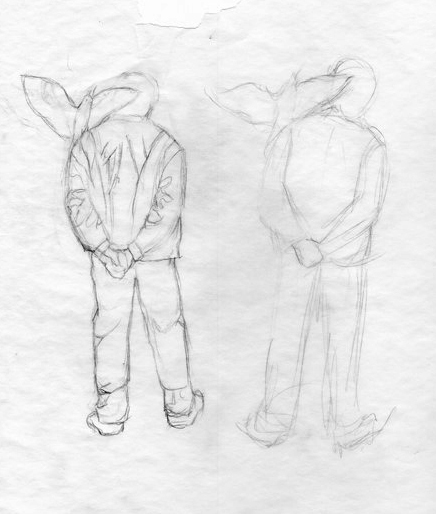
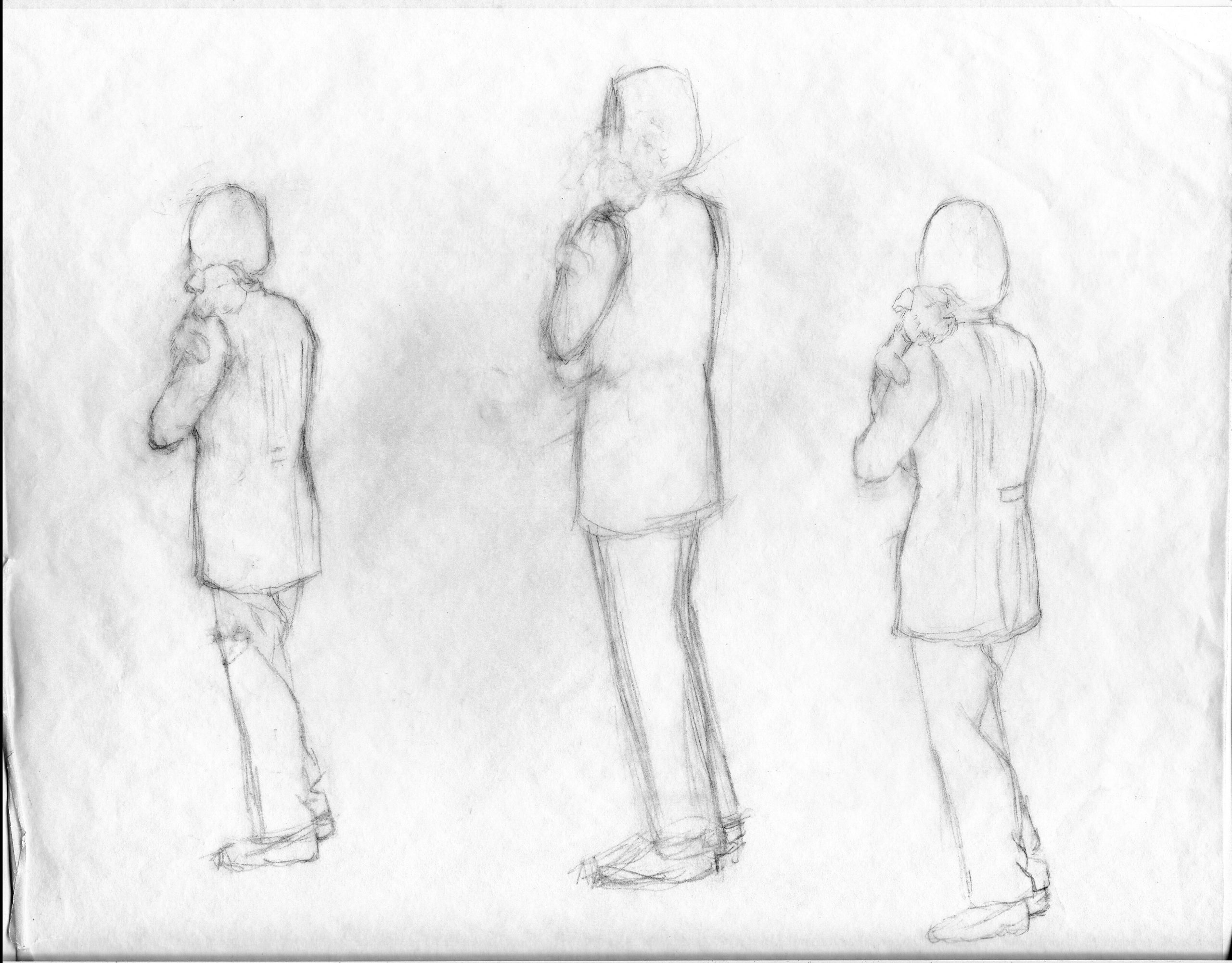
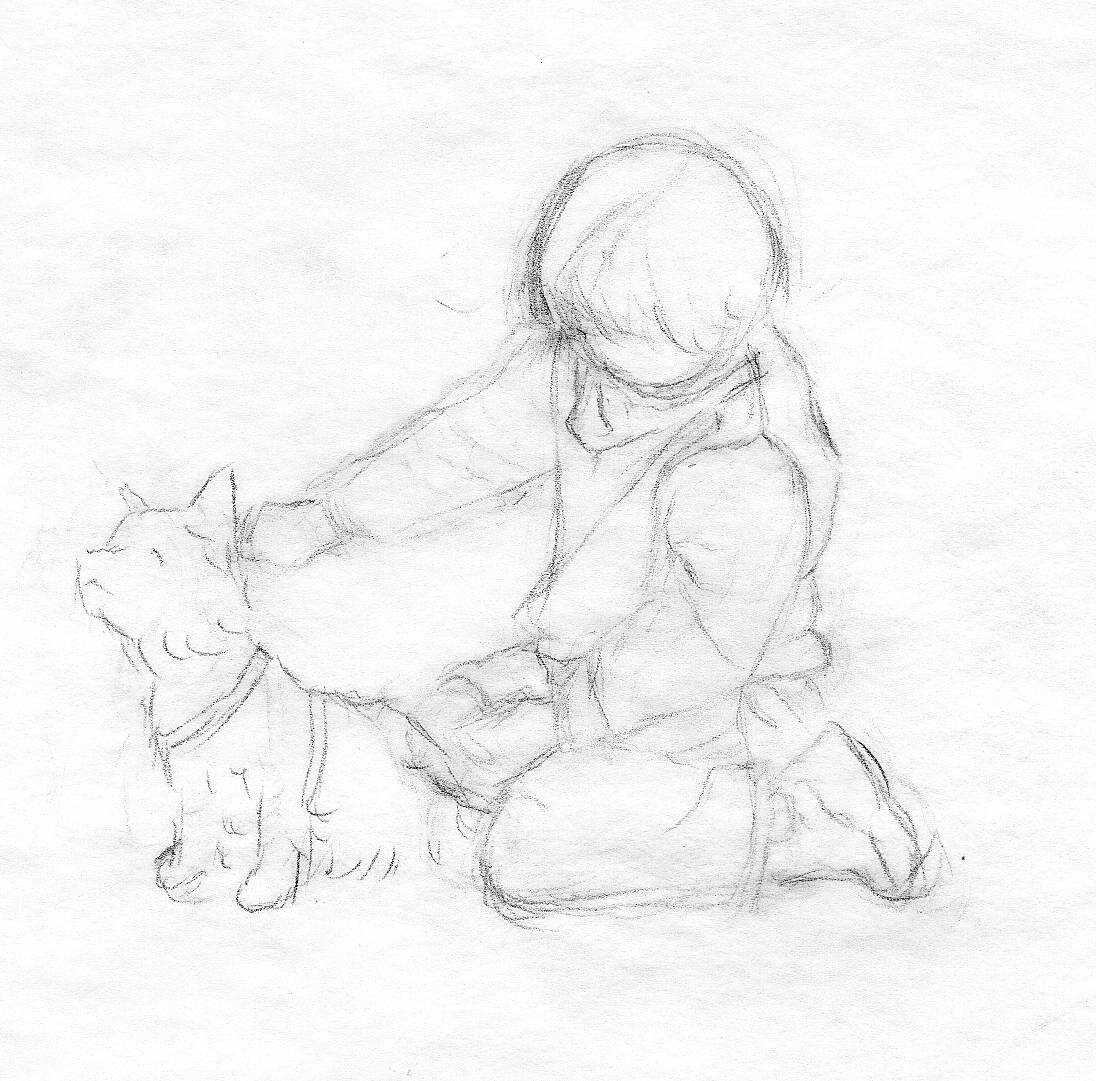
Note below that the central vanishing point located at the IHS symbol in the frontal piece is not in the center of the painting but is to the right, creating a far more interesting slightly asymmetrical design.
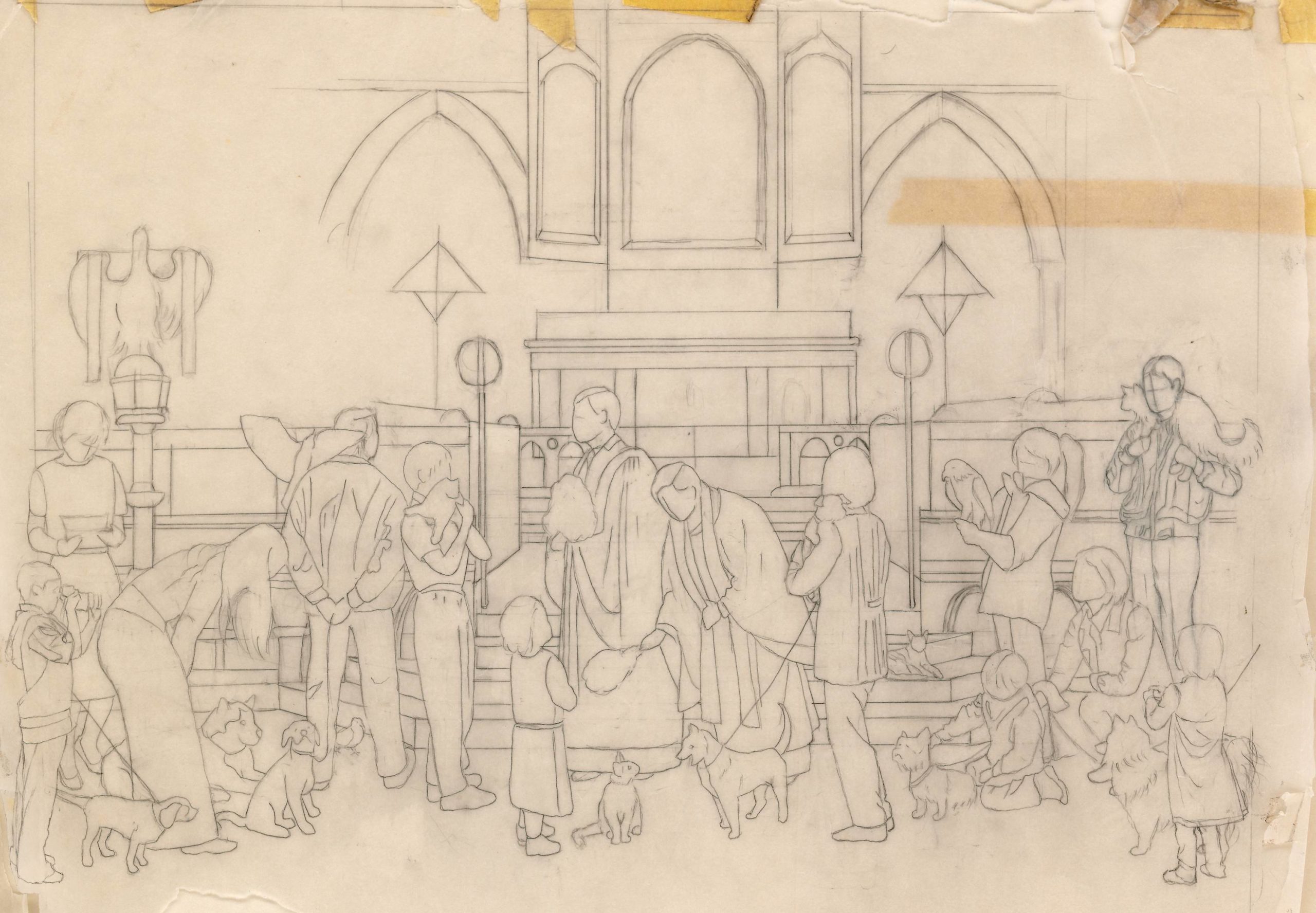
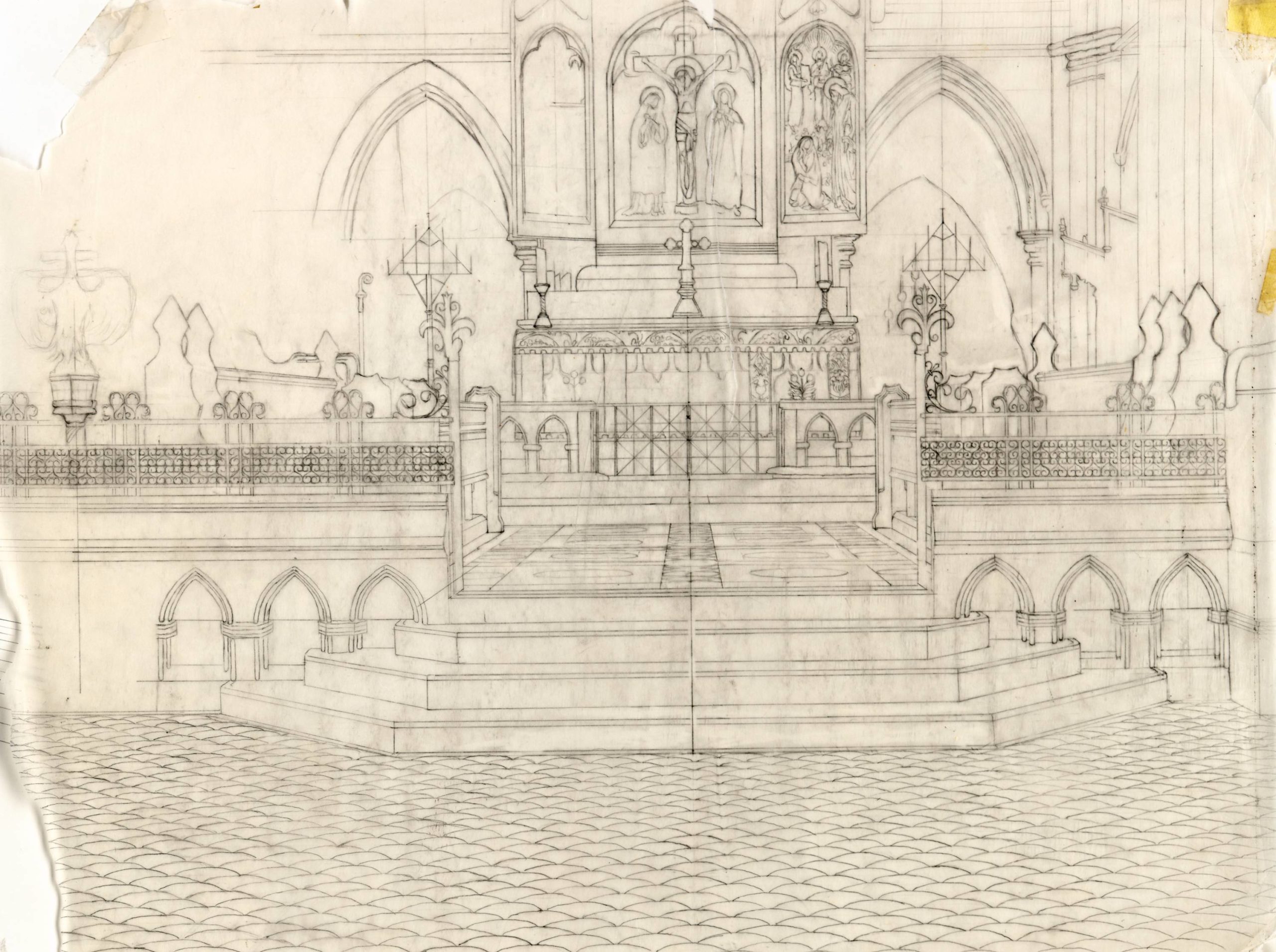
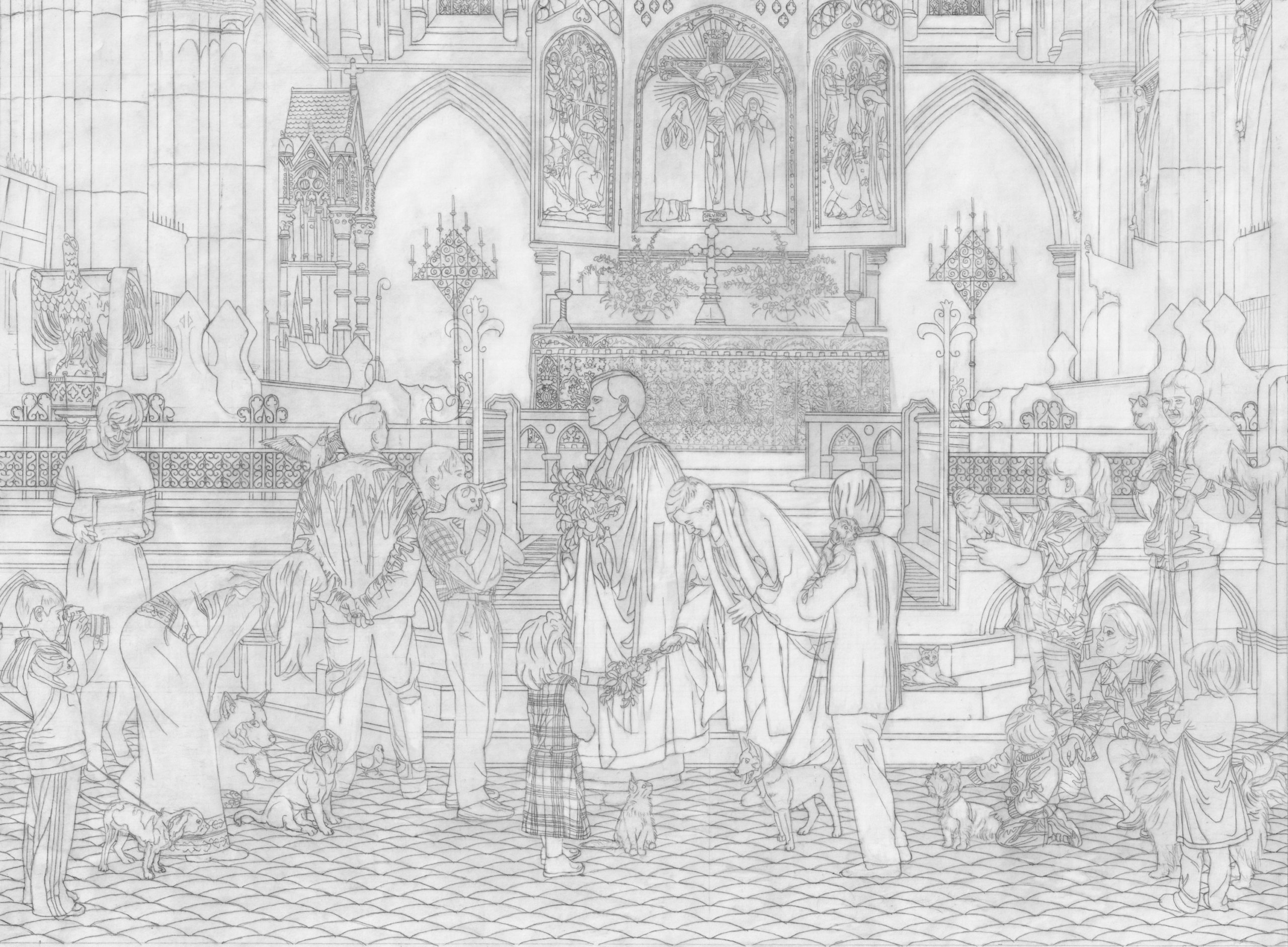
The underpainting of burnt umber on the Sapele mahogany panel unfortunately took three more years to complete due to a long hiatus caused by a minor right hand injury that morphed into a serious complication: Complex Regional Pain Syndrome.
In 2013, Monica Gomez conducted an interview with me on KTEP radio that provides a little background. My hand will never return to pre “fall” mobility but the syndrome miraculously went into remission after three months of therapy. With a total of almost two years of intense physical therapy in the “torture chamber and on the rack” to unfreeze individually all the finger joints and wrist, my hand obviously manages quite well enough as evidenced by the completion of the painting.
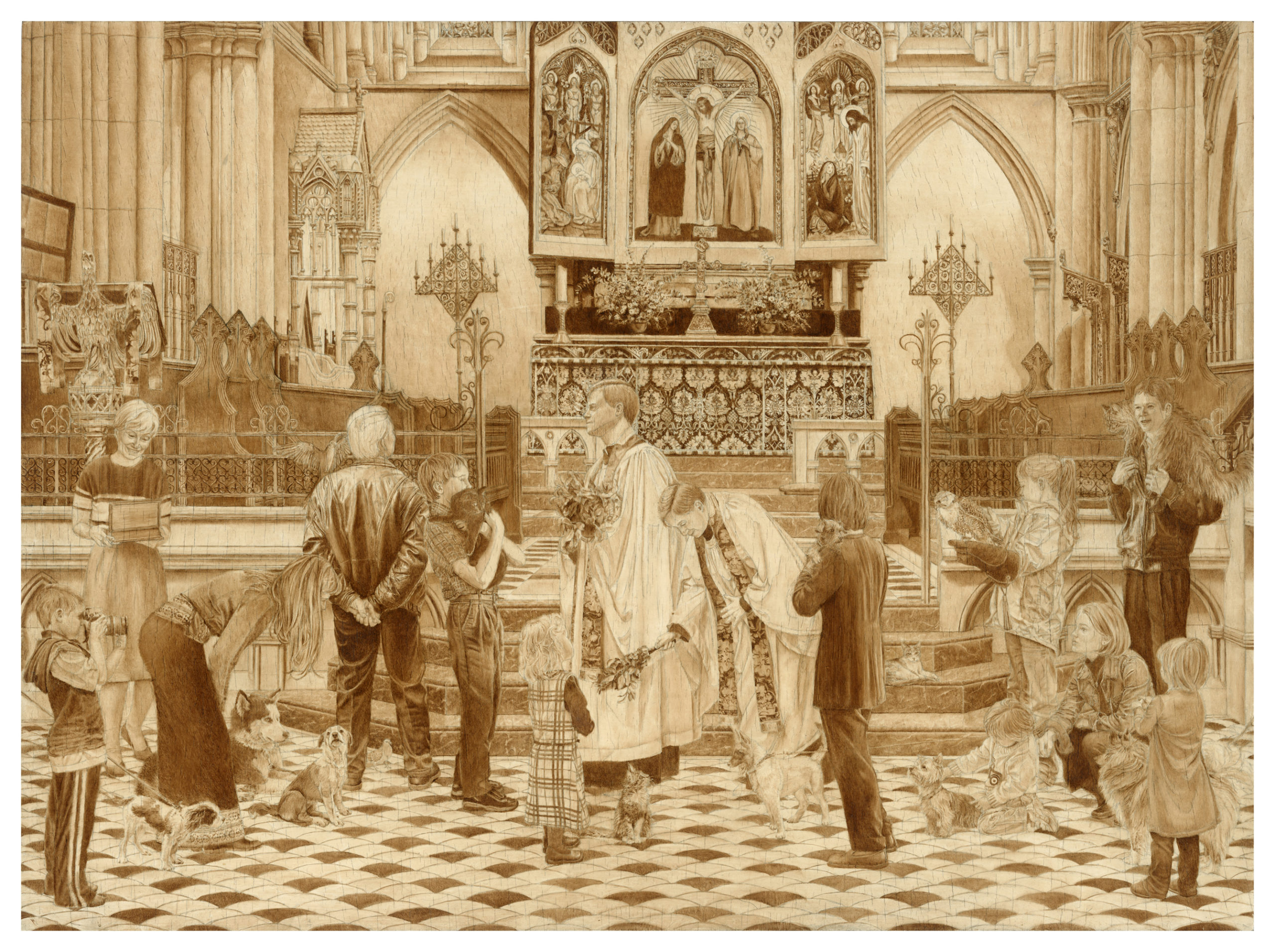
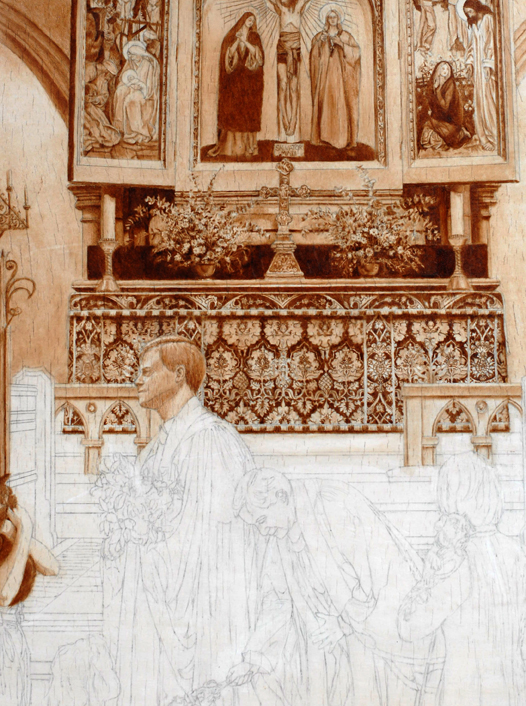
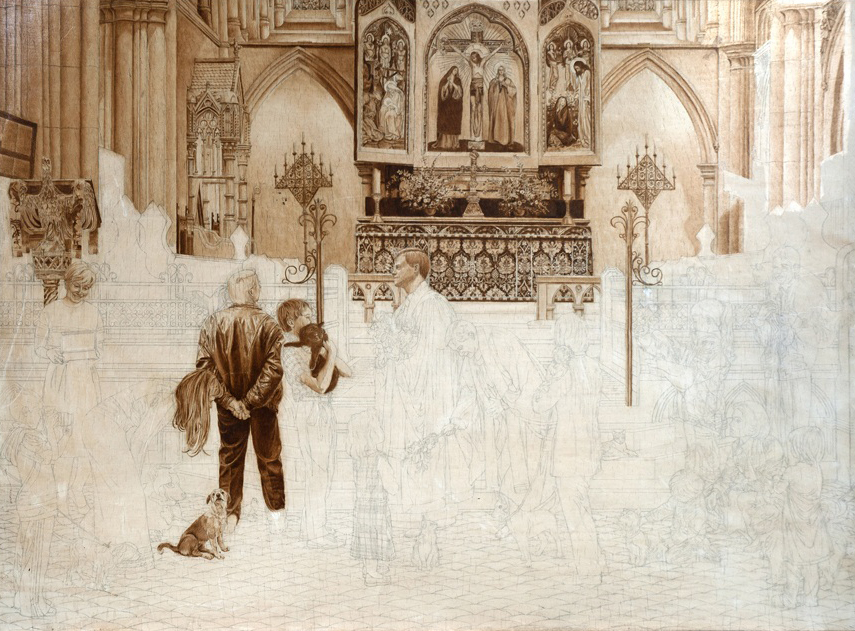
Working with traditional techniques including mixing my paints from powdered pigments, I painted at least three more layers of full color on most of the painting followed by some final scumbling and glazing.
Started in 2009, after roughly 8 years of actual work, et voila: “The Blessing of the Animals” practically finished December 30, 2017, just in time to fly back to El Paso for my mother’s 95th birthday and to send it to it’s first exhibition in New York where it also won it’s first award.
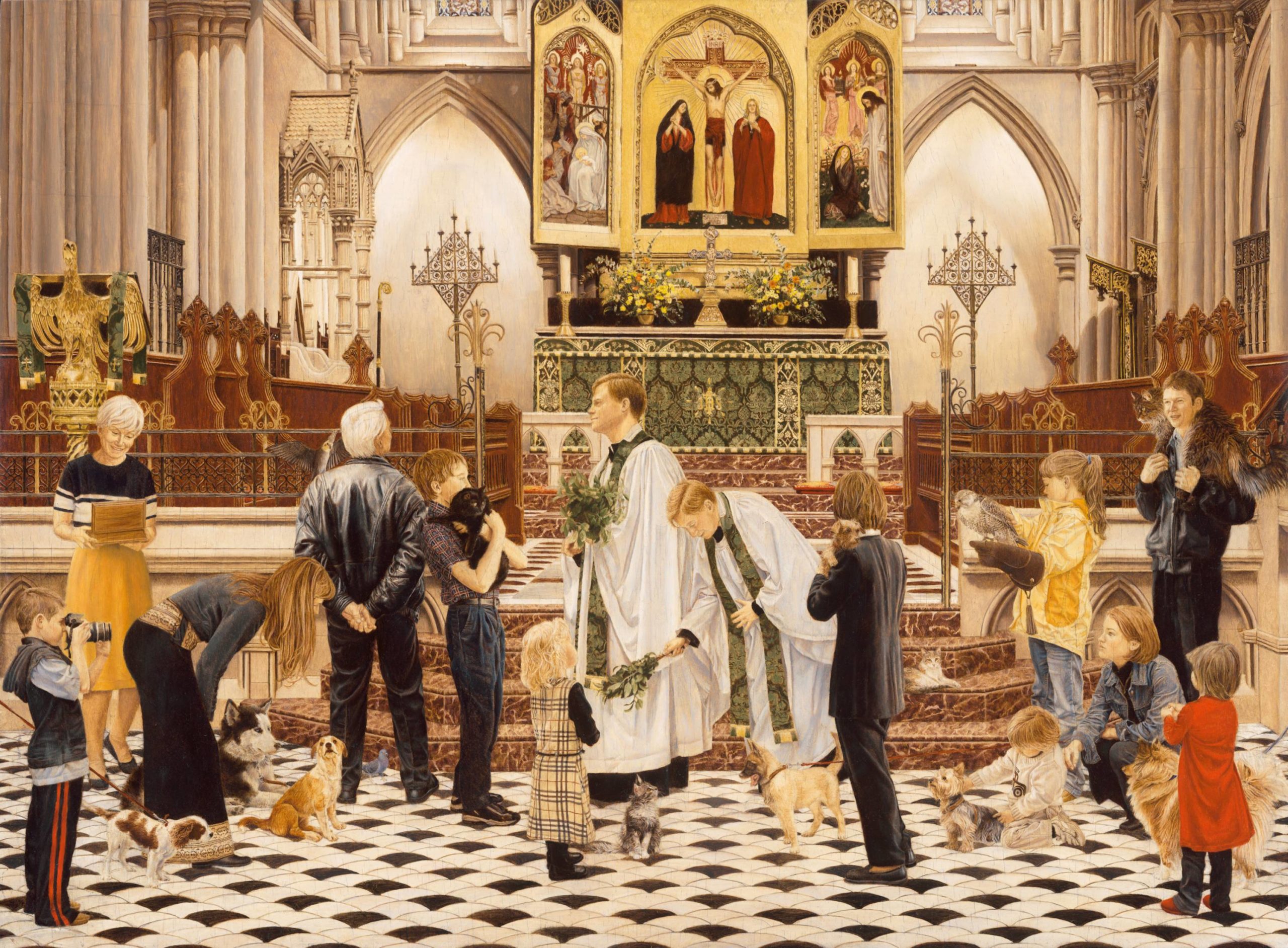
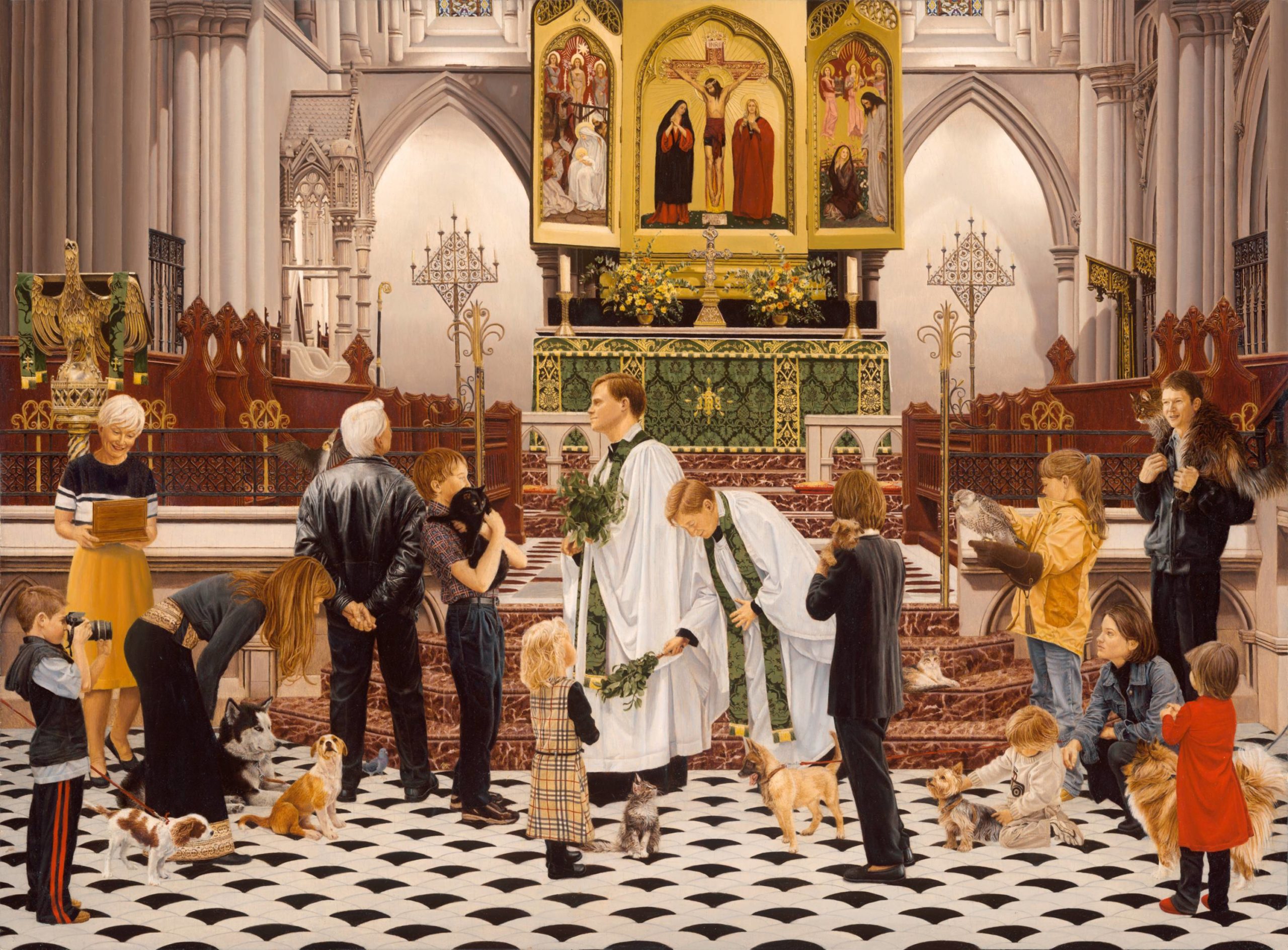
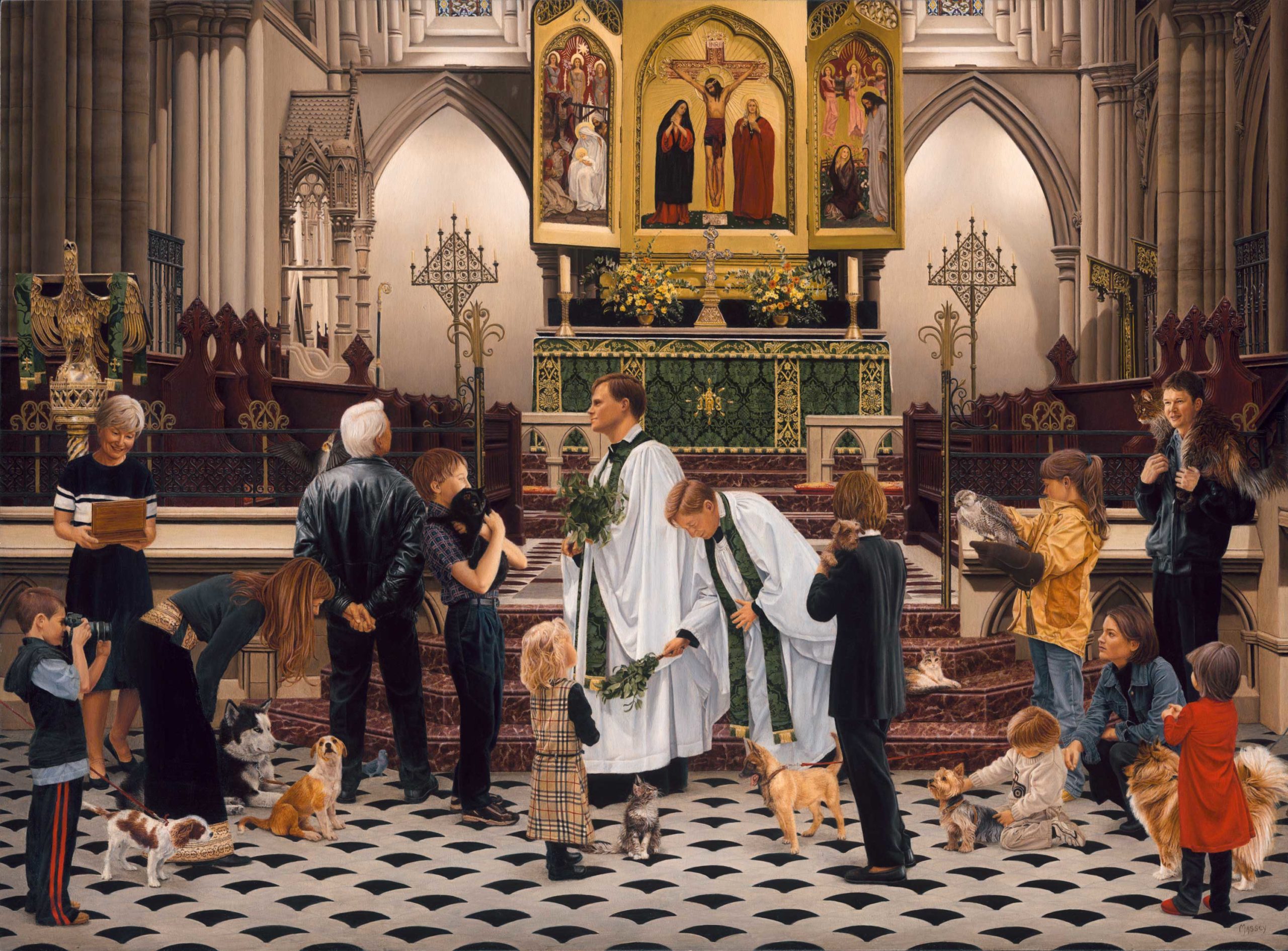
Besides the clergy, there are twelve characters in the painting, a reference to the twelve Apostles.
To keep the eye moving, all the living participants are doing their part by looking in different directions, even in subtle ways. For example, in one area, the cat being blessed is looking up at the hawk and vice versa, the dog straining at the leash is staring at the cat, the child Sophie is looking at the Dean, the Dean is looking at the cat, Rosie holding the dog Maxine on her shoulder is looking wherever you want (the Altar, the Dean, the Canon, etc.), Maxine is looking at something or someone outside the painting, and the cat on the step is looking directly at you (the only participant to do so)…and so too do the rest of the characters continue to keep the eye moving with their lines of vision.
The leashes leading out of the painting on either side indicate there are more participants outside the action of the painting, but are helping to keep the painting from becoming overcrowded. Note the red leash from the straining dog (lower left) connecting the central group to the right group.
Using the Burberry outfit for the child in the central area allows enough detail and interest to catch the eye but is subtle enough in color to let the eye move on to take in the rest of the painting. The roughly triangular groupings of characters have little gentle overlapping to keep them from being isolated and thus also add to the movement across the whole image.
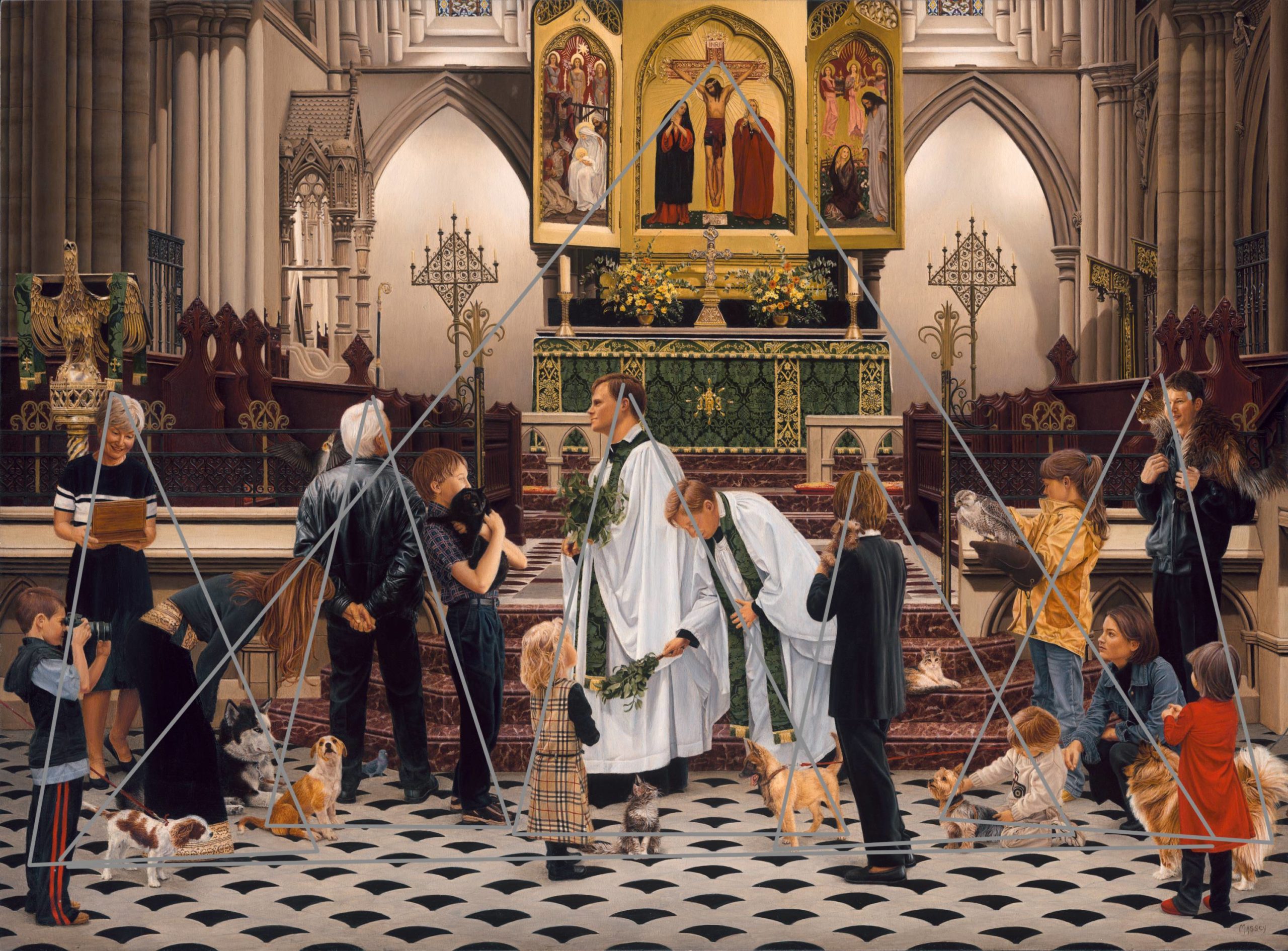
My use of a classical triangular composition for its strength and stability is a common one for me. Note their presence in the individuals groupings as well as in the overall larger composition with the red elements connecting corner to corner at the bottom and then leading upwards from the corners to the altar piece.
This is why the children in red in this painting are located on the edges rather than in the central part where I often place them (which additionally would have stopped the eye in this detailed piece anyway).
The use of this design motif is especially appropriate in the larger theme of this painting in that a triangle is a symbol of the Holy Trinity: Father, Son & Holy Ghost.
Read the full step-by-step processing for “The Blessing of the Animals” and see more reference images at annjamesmassey.com.
Discover more figurative art when you browse RealismToday.com.
Visit EricRhoads.com (Publisher of Realism Today) to learn about opportunities for artists and art collectors, including: Art Retreats – International Art Trips – Art Conventions – Figurative Art Workshops (in person and online) – And More!


